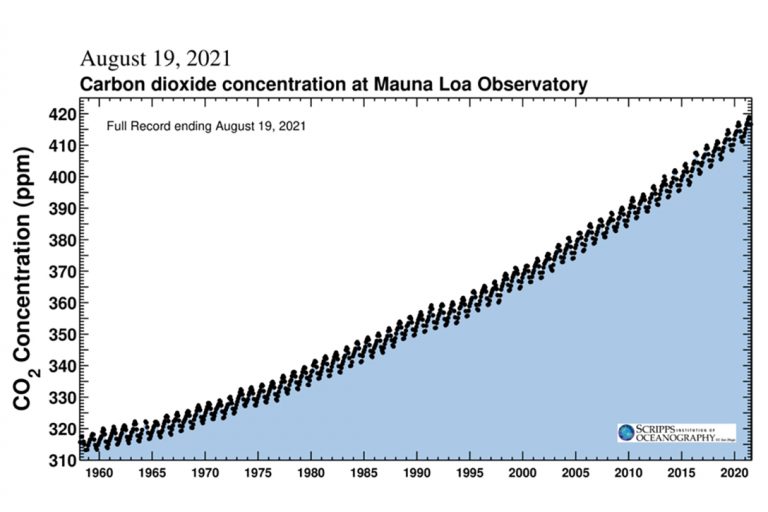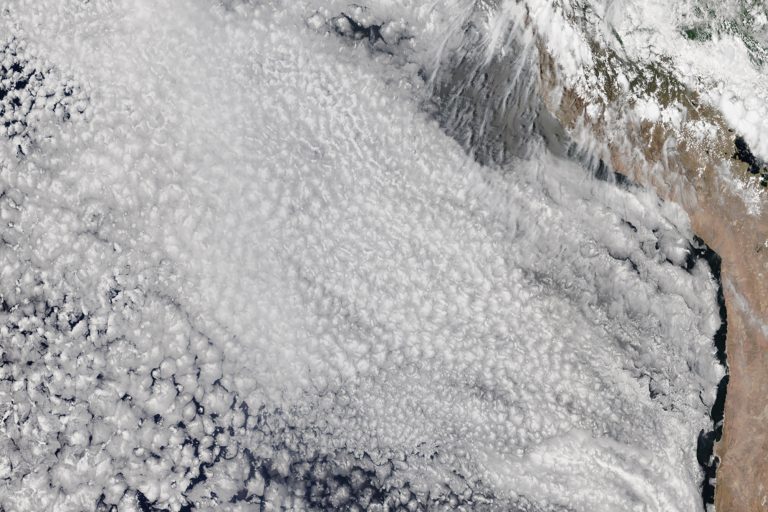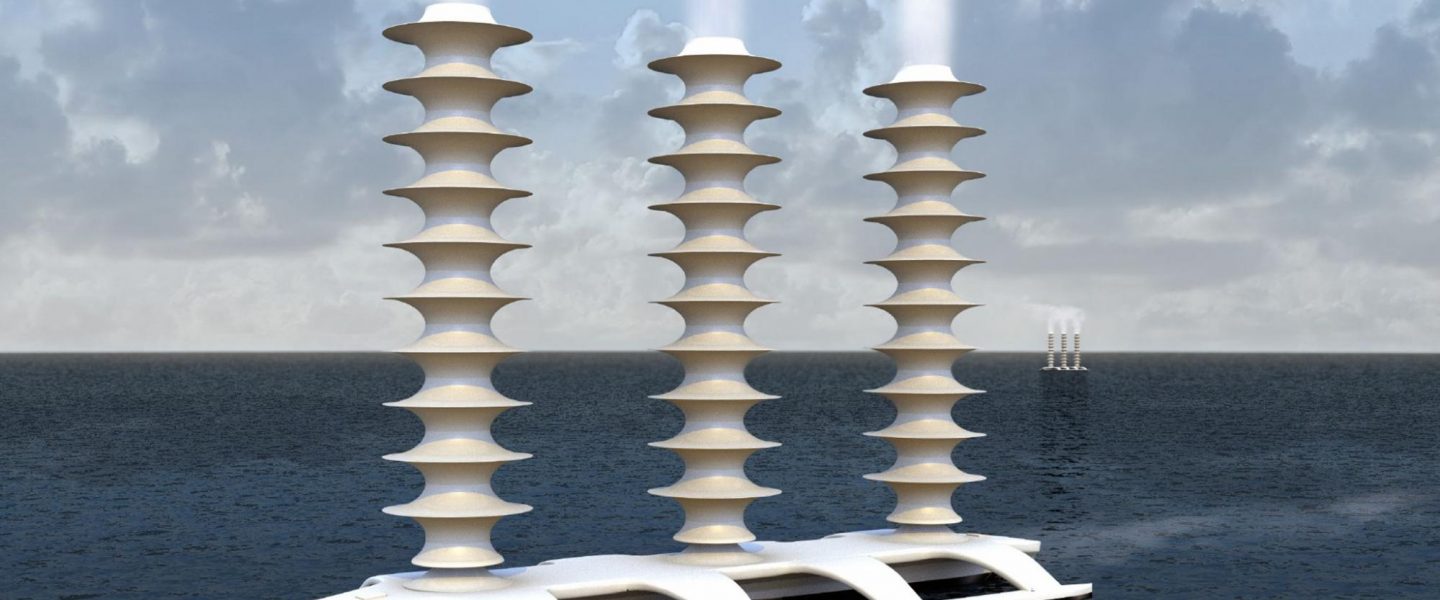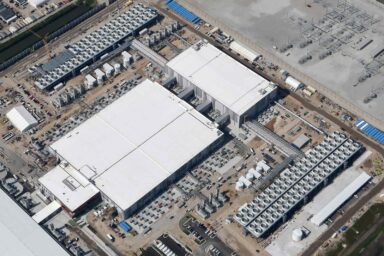For decades, a Scottish engineer has labored to answer a question: Could spraying seawater into clouds to make them reflect more sunlight lead to a brighter future for the planet?
Stephen Salter was working on an eggbeater-shaped wind turbine in his machine shop in Edinburgh, Scotland, when he got a curious call. On the other end of the line was the cloud physicist John Latham with an unusual observation: If seawater were injected into stratocumulus clouds — the low-level, puffy, often gray ones that can look like cauliflower — to make them just 2 percent brighter, they would reflect enough sunlight to keep the Earth’s temperature from rising. Latham had christened the concept marine cloud brightening.
One of the pieces needed for Latham’s idea to work, and the reason he called Salter, was a nozzle that could eject seawater in a super-fine spray. That seemed a simple request for Salter, a pioneer of wave energy who was named a Member of the British Empire for his contributions to the field. What could be tricky about a gadget like the one already used in inkjet printers?
“Yeah, yeah, no problem, I can easily do that,” Salter recalls saying. He was a bit too optimistic back then, he adds with a grin.
It’s been 17 years since Salter took that call from Latham, who has since died, but he’s now tantalizingly close to holding the first version of the promised nozzle in his hands. And not only a nozzle: Salter also designed a ship that would carry the nozzle, with all the electronic guts and mechanical appendages needed to run it, at least as a prototype.
Latham’s idea has also caught on in other pockets of the science community. The Marine Cloud Brightening Project, headquartered at the University of Washington, has partnered with the state’s national laboratory; SilverLining, a nonprofit supporting climate change research; and the Palo Alto Research Center of Xerox fame to better understand the effects of aerosols on clouds.
Another collaboration, between the University of Sydney and the Sydney Institute of Marine Science, seeks to help the severely bleached Great Barrier Reef survive until global carbon emissions have dropped. Members of a team led by Daniel Harrison, an oceanographer at the University of Sydney, completed two field trips to test nozzle performance and found that with additional work on the droplet size, they’ll soon be able to brighten their first clouds and assess the impacts on the reef on a small scale.
“We’re on good terms,” said Salter of the collaboration among research groups. “We are friendly rivals, I think is the word.”
For his part, Salter pitches marine cloud brightening as a way to keep Arctic sea ice from vanishing completely during summers. Three-quarters of Arctic sea ice has already melted. “We have a really worrying problem,” Salter said, but he remains hopeful that his project will help.
On the High Seas
Salter is quick to point out that he stands on someone else’s shoulders, using the same wave of the hand with which he typically urges webinar emcees to skip his CV and present his designs. His work is based on a phenomenon first described by Sean Twomey, an Irish atmospheric physicist who in the 1970s flew over marine cloud formations to scoop up some of their drops and measure their albedo, the fraction of sunlight reflected back into space when it hits clouds. Twomey found that for the same amount of water, many small drops reflect more solar radiation than a few large drops. It’s called the Twomey effect.
Salter readily replicates this phenomenon by holding out two clear Mason jars. One is filled with glass balls 4 mm in diameter, the other with beads one hundred times smaller. As posited by Twomey, the tiny, almost powdery glass particles appear much whiter than the larger spheres. As Salter points out, clouds turn dark when their droplets are large enough to fall as rain, hence the bulletproof physics in the phrase “dark storm clouds are gathering.”
Earlier work by Twomey also explained how cloud droplets can’t form without help from microscopic docking stations. They need a nucleus — a speck of dust or other aerosol, something more than just empty air to latch onto and grow to size. Every cloud drop encases a little seed. The more nuclei floating around, the more droplets will form.
This is where Salter stepped in. He’s designing boats with spray nozzles to take advantage of the Twomey effect. At first glance, Salter’s technology seems straightforward, or at least not alien to anyone who owns an inkjet printer, remembers 1960s mainframe computers, and can imagine sailing a steampunk schooner.
The centerpiece of Salter’s planned spray ship are nozzles punched into a silicon wafer. They take ocean water and discharge it in droplets 0.8 microns in diameter, about ten times smaller than a human red blood cell. Each droplet is then carried skyward by atmospheric turbulence — the constant churning of air layers due to temperature differences between altitudes — until it reaches low-lying clouds. As each ocean droplet evaporates along the way, it reveals its invisible cargo: 10-14 gram of salt that is now free to seed cloud droplets up high. The journey takes about an hour from ocean surface to cloud cover.
The nozzles are embedded in a mast mounted on a vessel shaped like a missile, narrow and cylindrical. Instead of traditional sails, the ship is propelled by Flettner rotors, which look a bit like out-of-service smokestacks. Flettner rotors gained fame after besting traditional sails in a race from Danzig to Scotland in the 1920s, said Salter, but their use was stalled by the Great Depression and only recently picked up again as a way to reduce fuel consumption in long-distance shipping. On Salter’s ship, the cylinders point skyward as though something spectacular beyond a 5- to 20-percent fuel savings were about to happen.
As designed, the vessel itself doesn’t actually touch the ocean surface. It is fitted with hydrofoils that lift the hull out of the water. Without water resisting its body, the vessel flies more than floats and so gains speed. “When I first drew these, people thought it was ridiculous to go to hydrofoils,” Salter said. “But now all the America’s Cup boats use hydrofoils and there’s also around-the-world races going on now and about half of them have got hydrofoils. So it’s not quite as ridiculous as when it first started.”
The hull offers sockets for plug-in cartridges that serve all kinds of needs. There are slots for batteries, diesel fuel, vacuum pumps, HEPA filters, desalination units, ultra-filtration membranes, hydraulic rams, an oil-to-water pressure exchanger — and spares for some of these units.
“It’s like the idea of 1960s mainframe computers where you had a big box with a whole lot of sliding sockets and cards that would slide into them into a back plane,” he explained. Swapping cartridges makes it easy to troubleshoot in case one of the parts fails, eliminating the need to scour the entire body for one fried microchip.
“That’s the philosophy. When we really understand all of this we could probably put everything in one engine room and get something that’s a bit lighter. But this is a way of being able to correct mistakes very quickly, really in just a few minutes,” said Salter.
He drew most of the parts in two-dimensional schematics and hopes to translate them into 3D computer models to better estimate weight and stress resistance. He’s close to the point where he can send his designs to manufacturers and have physical copies built.
It’s surprising that Salter’s designs exist at all. Financial support from government or philanthropists has been slim to nil. Two of his previous innovations suffered a similar drought: His Salter Duck, among the first and most efficient wave-to-energy converters in a lab setting, sank when denied funding for pilot tests, and his Dervish, a tripod-like rover able to clear anti-personnel mines in the explosive-ridden Balkans, died for lack of money before reaching the market. With cloud brightening anything but embraced by the scientific mainstream, Salter didn’t expect his project to attract much capital. Instead, his nozzle and ship blueprints came courtesy of his retirement funds and a work schedule of 7 hours per day, 7 days a week, which he maintains even now into his 80s.
A Reason to Carry On
Despite the lack of funds, Salter has been encouraged to keep going by scientists closest to the Arctic sea ice, those studying the dynamic interplay of its every pressure ridge, thaw hole, ice tongue, and frost flower. Chief among them is Peter Wadhams, head of the Polar Ocean Physics Group at the University of Cambridge, who has led more than 40 polar field expeditions in nuclear-powered submarines serviced by the Royal Navy, in retrofitted wartime Douglas DC-4 airplanes, on double-hulled icebreakers, and from drifting ice camps.
“He’s very worried about what happens if we lose the ice,” Salter said. “He probably knows more about the Arctic than anybody. He’s been a big support for me.” In his early Arctic voyages, Wadhams was the first to quantify the thinning of sea ice. “1990 I suppose was the date I first realized serious things were happening to the ice cover,” he said. “Since then it’s accelerated, really.”
If the current trend continues, the Arctic is projected to be entirely ice free during its summer months by 2033, decades earlier than previously expected. The National Snow and Ice Data Center, which has kept 42 years of satellite records, considers each new record low of summer sea ice as “another nail in the coffin,” said the center’s director, Mark Serreze. As the casket is slowly sealed shut, experts are noticing knock-on effects in connected ecosystems: This month scientists spotlighted early warning signs of collapsing Atlantic ocean currents that carry heat between the equator and northern latitudes and so regulate the intensity of hurricanes and droughts.
When Salter presents his progress on marine cloud brightening at webinars, he displays the Keeling Curve. It’s the longest-standing continuous record of carbon dioxide concentrations in the atmosphere, showing a timeline from 1958 to the present. The Mauna Loa Observatory on Hawaii collects the data to be plotted, and a network of observatories around the globe has verified a long-term increase in carbon dioxide concentration.
Salter has modified the timeline slightly, but to stark effect. He has added the dates of climate conferences held over the years: Rio Earth Summit, 1992; Kyoto, 1997; Copenhagen, 2009; Paris, 2015. After each conference, instead of dipping, the Keeling Curve continued its upward swing undisturbed, and reads 415 ppm as of August 19. The next UN Climate Change Conference, COP26, is to be held in November in Glasgow, Scotland, less than 50 miles from Salter’s machine shop in Edinburgh, and he already imagines the event as just another impotent blip on his modified Keeling Curve, a striking reminder of the disconnect between accepted science and national policy.

The deepening climate crisis has spawned a growing body of work on marine cloud brightening and similar forms of geoengineering. Congress’s 2019 omnibus spending bill granted the National Oceanic and Atmospheric Administration $4 million to assess the potential of solar climate interventions. A year later, SilverLining awarded $3 million in grants to universities across the nation to settle practical questions about spray droplet size and injection location. A March 2021 report by the National Academies of Sciences, Engineering, and Medicine urged Congress to invest up to $200 million to better understand the feasibility and risks of solar geoengineering.
These individual projects are not coordinated, but there’s a common sentiment that solar geoengineering is an option that should be on the table “just in case.” For his part, Salter doesn’t see marine cloud brightening as a panacea; it’s more a way to buy the dying Arctic time until fossil fuel-dependent economies overcome their inertia and systemic carbon reduction takes off. Critics, however, see it as a diversion, commandeered by fossil fuel companies as an exit strategy in lieu of cutting carbon emissions and offering politicians an excuse to give a pass to the worst offenders.
A Bumpy Road Ahead
Salter is still going strong, though he has his share of worries. He plans to test components of his spray ships in a laboratory soon but is butting heads with the administration at Edinburgh University. The wrangle is over new safety standards that might prohibit him from working alone and past 6 p.m. “There’s friction building,” he said. “I may have to find a place to move my workshop out, which would be a rather difficult thing to do.”
In any case, his project is soon likely to need a team. Apart from building the ship, there are climate models to run, field tests to organize, and serious funds to raise. “I have before tried to run a project which was running out of money and it’s very, very stressful,” Salter said. “You’ve got people with mortgages and families to feed. You’re worried about them. And I really don’t want to do that anymore.”
To advance his project, Salter recently asked the Centre for Climate Repair at Cambridge to look at his designs. The center was founded in 2019 to advance research into emissions reduction, greenhouse gas removal at scale, and repairing damaged climate systems — all while asking itself how to get political and financial actors to respond to its findings. Salter’s work fits in with climate-system repair, and the center was happy to pick it up.
“He published his design in 2013 or 2014, but it’s never been built,” said Hugh Hunt, professor of engineering at the University of Cambridge and deputy director of the center. “So we want to build one. And not just one. We want to build a few, to optimize this, see if we can get it to work. It’s the ‘at scale’ bit which is tricky. It’s all very well to make a few clouds, but to make millions of clouds over a couple decades, that’s where it gets tricky.”

The center also set itself an ambitious, yet-to-start schedule to deep dive into modeling, looking at everything from the minuscule scale of droplet formation to droplets’ interaction within cloud arrays to their effect on the global climate system. Supercomputers capable of running these CPU-intense simulations are housed at the UK’s national weather service, next door to the University of Exeter, where Hunt studies atmospheric chemistry.
“What we’re doing in our Centre for Climate Repair,” said Hunt, “is to do modeling of the climate and of clouds to try to be sure that the anticipated effectiveness of marine cloud brightening can be realized without unacceptable adverse consequences. We’ve really got to be sure.”
“There’s going to be side effects,” emphasized Alan Gadian, atmospheric scientist at Leeds University and Salter’s go-to for all things climate-modeling. His simulations brightened clouds in regions covering 5 percent of the ocean’s surface, a scenario that would cool the Arctic but spawn more intense hurricanes in areas off the coast of Mauritania and Senegal in West Africa, and in Central American countries hugging the Caribbean. A later study that involved brightening clouds in patches off the coasts of California, Peru, and Namibia showed rainfall significantly reduced in the Amazon basin. If these impacts can’t be corrected, the authors wrote, marine cloud brightening “should never be deployed.”
The recently released Sixth Assessment Report of the Intergovernmental Panel on Climate Change highlighted that, despite the potential for marine cloud brightening to cool the Arctic and other ecosystems, these regional approaches involve “large uncertainties in the magnitude of the responses and consequences.”
The question of where and when to deploy marine cloud brightening will challenge both science — how to achieve effectiveness with minimal side effects — and governance — how to determine who will be part of the decision-making process. One aspect can’t do without the other, and successful deployment of cloud brightening, Hunt is sure, would require a logistical feat that is ramped up and sustained over years. “You can’t just wander in and start brightening clouds without really full-on proper engagement with local communities and full-on proper involvement,” he said.
Current governance of marine cloud brightening to restore Arctic sea ice is fuzzy at best. The Arctic Council regularly convenes eight countries to discuss Arctic matters, and although indigenous communities participate in discussions as so-called Permanent Participants, they are not allowed to vote on resolutions.
A further complication is that ships wouldn’t actually be deployed in the Arctic, which lacks the right kinds of clouds, but in the Atlantic Ocean, and there most likely in international waters outside the direct jurisdiction of any individual nation. And the long-term side effects turn the initially regional operation into a global intervention.
To draw a crowd for just this sort of discussion and raise the profile of geoengineering, the Centre for Climate Repair is planning a series of workshops leading up to COP26 in November. “And what most people do, people who want to try and have an impact,” Hunt said, “is put events on around the COP meeting. Because we don’t expect the COP meeting itself, inside, around the negotiation tables, that’s not where there’s going to be discussions about marine cloud brightening. No one’s going to talk about it.”
Salter applied to present at COP26 but was turned down. The rejection didn’t surprise him. He hesitated for a moment as though nonplussed when asked if he had a warning he would have offered his younger self when he took Latham’s call almost two decades ago. “No, nothing. I already knew that there was lots of opposition,” he answered, sounding not so much bitter as weathered and hardened.



